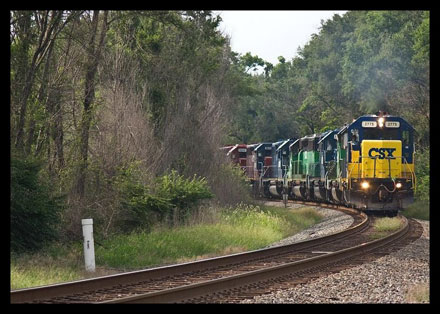‘Greening’ Transportation in the Supply Chain
Even corporations with clear environmental aims fail to go the distance when it comes to their supply chains. But lessons from a small group of Fortune 500 companies can give them the direction they need.
Topics
Leading Sustainable Organizations

Image courtesy of Flickr user J Heffner.
Not long ago, it would have been considered unnatural for corporations to set their priorities and goals with an eye toward improving their environmental performance. But a steady flow of high-profile corporate initiatives and studies of customer behavior have revealed a change in the business climate. Companies that integrate sustainability practices throughout their supply chains are experiencing a clear benefit. Increasingly, key stakeholders — from investors to customers to prospective employees — are monitoring sustainability efforts for themselves and making their decisions accordingly.
The Leading Question
How are companies addressing the environmental impact of transportation in their supply chains?
Findings
- Only 22 Fortune 500 companies have begun blunting their supply chain’s impact on the environment.
- Mostly, they pursue discreet projects with measurable outcomes.
- A more holistic approach could yield greater rewards — but not without requiring risky upfront investment.
But more than just the threat of negative publicity is pushing corporations into the green zone. With domestic policy makers debating the merits of cap-and-trade legislation and world leaders struggling to agree on a climate change treaty, it’s only a matter of time before environmentally unaware companies will face steep fines for their failure to keep pace. At the same time, the slow-growing U.S. economy is forcing companies to focus on improving their efficiency to offset tepid demand and counterbalance the price volatility of commodities such as water and energy.
References
1. “U.S. Primary Energy Consumption by Source and Sector 2007,” Dec. 5, 2008, www.eia.doe.gov; and “Emissions of Greenhouse Gases in the United States 2007,” Dec. 5, 2008, ftp://ftp.eia.doe.gov.
2. H. Lee, “Aligning Supply Chain Strategies With Product Uncertainties,” California Management Review 44, no. 3 (2002): 105-119.
3. D. Lovaas, “Moving Freight: Transport Beyond Oil,” In Business 29, no. 1 (2007): 19-21.
4. C. Facanha and A. Horvath, “Environmental Assessment of Logistics Outsourcing,” Journal of Management in Engineering 21, no. 1 (2005): 27-37.
5. Calculated from Bureau of Transportation Statistics, “Commodity Flow Survey,” 1997, www.bts.gov; and U.S. Environmental Protection Agency, “Inventory of U.S. Greenhouse Gas Emissions and Sinks: 1990-2005,” 2007, http://epa.gov.
6. S. Murphy, “Will Sourcing Come Closer to Home?,” Supply Chain Management Review 12, no. 6 (2008): 33-37.
7. Energy Information Administration, “Real Petroleum Prices,” http://tonto.eia.doe.gov.
8. “Supply Chain News: Reducing Supply Chain Costs Is Top Executive Priority — to No One’s Surprise,” Sept. 1, 2008, www.scdigest.com.
